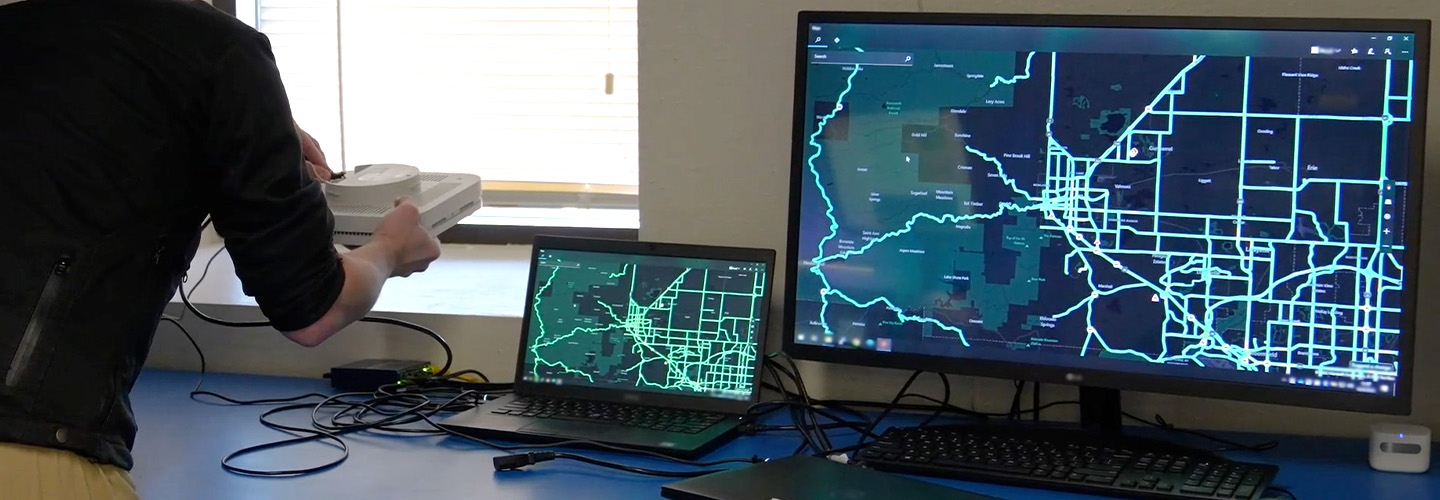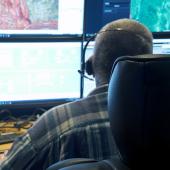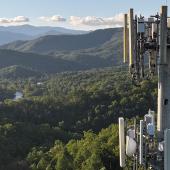FirstNet is an important resource for emergency managers, whether during disasters, everyday operations, or large planned events. FirstNet’s unique public safety features help emergency managers be more prepared, increase situational awareness, and better track assets and people.
Here are five things every emergency manager should know about FirstNet.
1: Push-to-talk on FirstNet extends range and awareness
Push-to-talk on FirstNet is a great communication tool for emergency management, delivering better situational awareness for responders in the field and in the emergency operations center.
Many push-to-talk apps allow you to share data, including photos, videos, GPS locations, links to online resources, and more—providing robust information that helps create a common operating picture for everyone.
FirstNet's push-to-talk capabilities can integrate with land mobile radios, extending your radio communications range to anywhere in the country. Push-to-talk over broadband can also be useful inside buildings where radio signals may not get through. Push-to-talk can handle emergency and non-emergency communications to alleviate traffic on radio networks.
2: Unprecedented insight with FirstNet’s Advanced Network Status Tool
FirstNet has a feature called the Advanced Network Status Tool that allows authorized personnel—such as communications unit leaders, communications technicians, or Emergency Support Function #2 communications coordinators—the ability to view network details at the cell-site level.
Emergency managers get unprecedented insight using the Advanced Network Status Tool. It gives visibility into the FirstNet network, including live outage information for individual towers.
The Advanced Network Status Tool shows a map with the status of outages, network coverage, and other real-time information for increased situational awareness during response. Emergency managers can see where coverage exists, where first responders can communicate, and how to adapt operational plans to incorporate this information.
When emergency managers are sending responders into an area, they know what to expect and what resources to deploy.
3: Uplifting response partners during an incident
FirstNet’s Uplift Request Tool gives emergency managers control of their network resources.
The Uplift Request Tool can be used to temporarily elevate the wider community of extended primary users—like public works, utilities, or waste management—during incidents when the network may get congested. For example, when a school shooting occurs, emergency managers can uplift school security, school administrators, or bus transportation to better coordinate the response.
An administrator typically designates one or more people as uplift managers. Uplift managers can select any FirstNet device for temporary uplift, for as long as 48 hours and extendable up to 30 days. Managing uplift can be done from anywhere in the country—it doesn’t have to be on scene or in the emergency operations center.
4: Deployables bring coverage where and when it’s needed
FirstNet deployables allow emergency managers to boost coverage during disasters, planned events, or in remote areas. These mobile cell sites link to FirstNet via satellite, do not rely on commercial power availability, and provide similar capabilities and connectivity as a cell tower—and are available to FirstNet subscribers 24/7 at no extra cost.
The FirstNet fleet has 150+ deployables located at sites around the country that can be sent to emergencies in a matter of hours or scheduled in advance of planned events.
When requesting a deployable, have your FirstNet account number ready and be prepared to share details about your situation so the deployable team can identify the best solution. The FirstNet fleet includes a range of options, including large trucks, towable units, luggage-sized units, communication vehicles, tethered drones, and other assets designed to fit your specific needs. FirstNet also has devices to boost indoor coverage that emergency managers can use when setting up operations in a facility for a week or longer.
5: An Emergency Management Guide for public safety broadband
The FirstNet Authority has a team of public safety experts with a collective 130 years of experience in emergency management. We asked ourselves—what do emergency managers need to know about using public safety broadband? The result was the FirstNet Authority Emergency Management Guide. This guide outlines the latest tools and technology that can assist emergency managers with daily or emergency response operations.
The guide covers:
- Step-by-step instructions for requesting deployables
- Descriptions of the Advanced Network Status Tool capabilities
- Details about the features of the Uplift Request Tool
- Considerations when selecting FirstNet devices and apps
The guide is regularly updated to reflect the latest technology. Stay tuned for the next update coming in September.
To learn more about how FirstNet is helping public safety and the emergency management community to leverage innovative public safety communications, sign up for the Emergency Management Take newsletter.




















